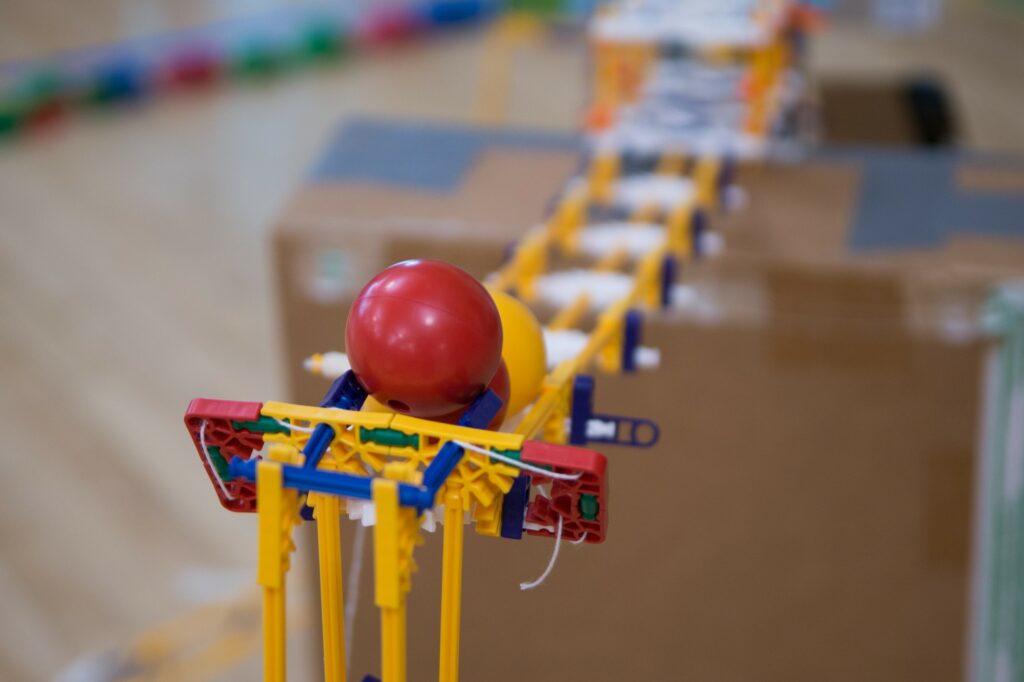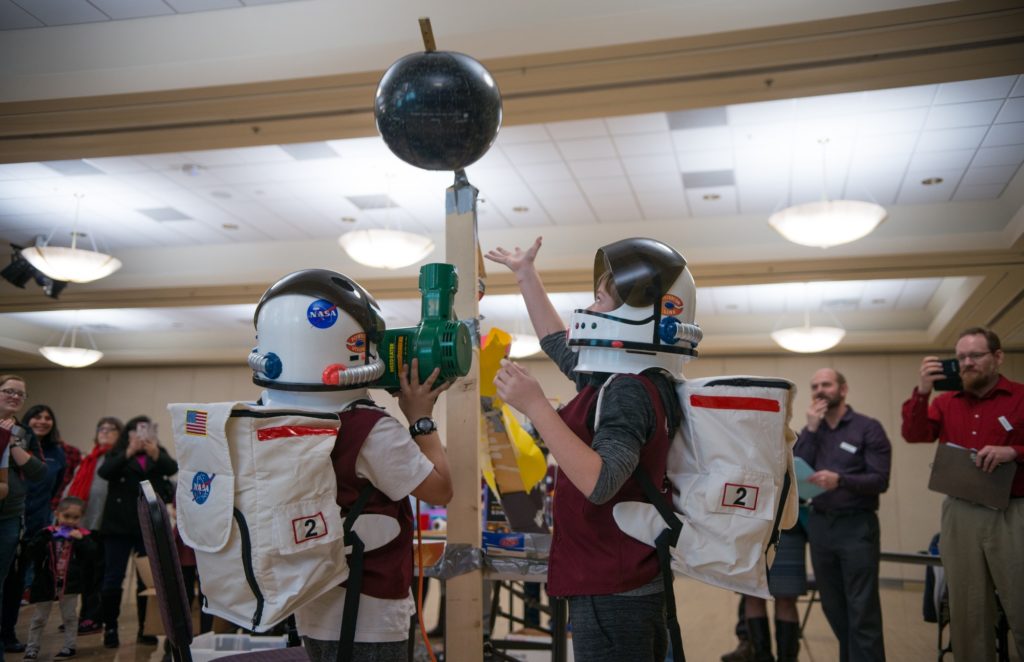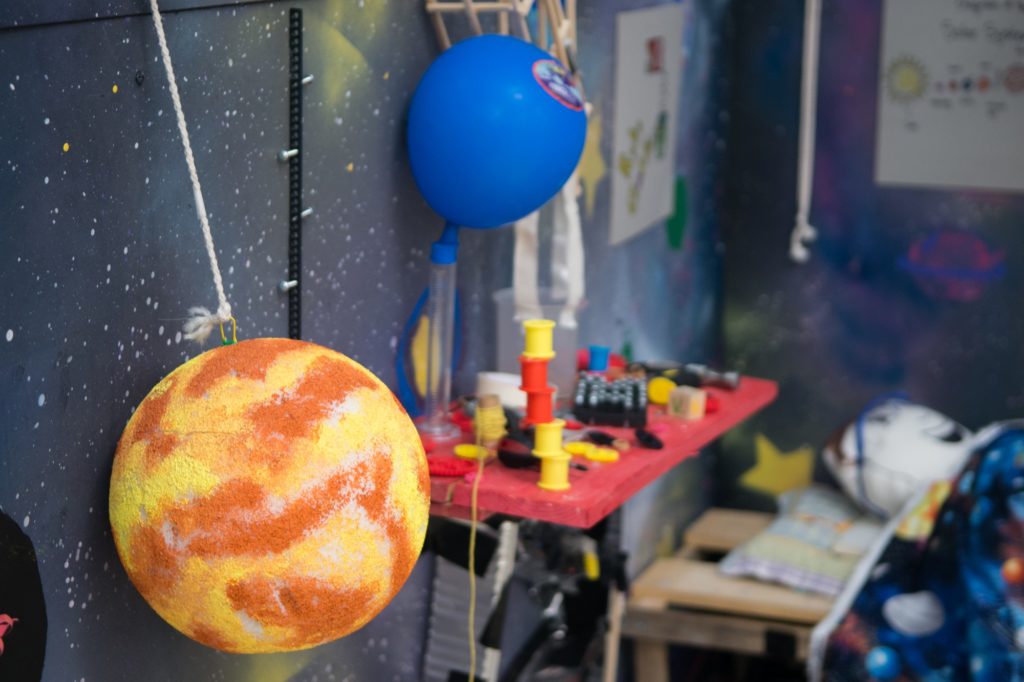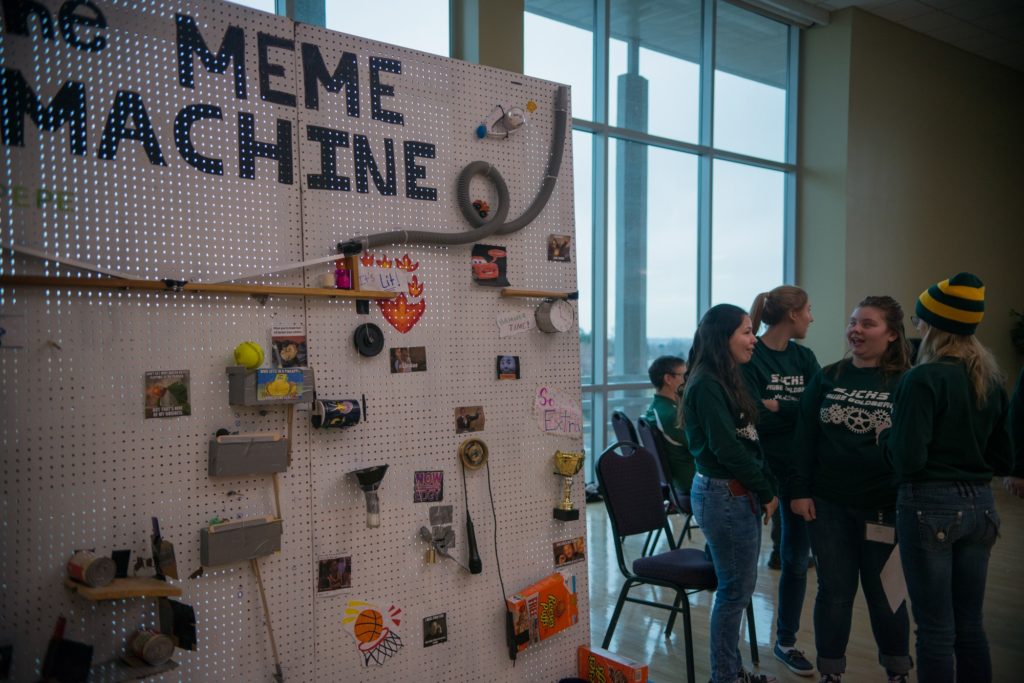High school, junior high and elementary school students came together Jan. 19 for an annual Utah Air Force Association and Weber State University Rube Goldberg Competition. Designed to make the simplest tasks — for example, this year’s task of pouring a bowl of cereal — as complex as possible, Rube Goldberg machines present engineering and creativity challenges for students.

Presented by the Hill Air Force Base AFA in partnership with multiple sponsors, WSU included, winning teams for this year’s regional Rube Goldberg Competition can expect a monetary prize and a chance to compete on a national level.
According to Lafe Peavler, advisor and team lead for St. Joseph Catholic High School’s Rube Goldberg machine, dubbed “The Meme Machine,” these machines can take several months to assemble before they’re ready for competition.
“We started building this in July. We had to transport it from our school and rebuild it here. We got here at about eight this morning,” Peavler said. The St. Joseph team finished reassembling their machine just before noon.
Jim Aadland, vice president of the Utah AFA and a coordinating director of the Rube Goldberg Competition, spoke regarding the AFA’s involvement in the event.

“We’re heavily into STEM. One of our missions is education, and getting young people ready to do big things,” Aadland said.
Aadland also said that while robotics and other engineering-related competitions are beneficial for young students, the whimsical and imaginative elements of Rube Goldberg machines are what make these competitions the better choice.
“This event is intended to get kids interested in STEM, including kids who aren’t going to go into engineering,” Aadland said.
Peavler agreed that the goal in competitions like these to generate an interest in the STEM fields.

“A lot of my students are looking to go into the sciences and engineering, but there are also some people that are never going to do those things. I have one that’s a theater major,” Peavler said.
Dana Dellinger, director of the Center for Technology Outreach, said that WSU’s partnership with the AFA has created a great community event offering significant educational value for participants.
“I think this is really about applying what they learn in school and in other parts of their lives,” Dellinger said. “When they put together these incredible, creative projects that involve a lot of physics, they’re taking everything they learn in science, math, engineering and tech classes and bringing it together as a team to do something with it.”

Aadland said that the AFA’s monetary award for the winner, which is provided by its sponsors, is intended to fund their national-level project.
“When they qualify for nationals, we’ll give them a plaque,” Aadland said. “We also have a monetary award, partially because it costs $395 for each team to sign up. We’ve lined up sponsors who will help defray that reward. For example, the Utah STEM Action Center gave us a grant just to put this on.”
Dellinger said many students feel like studying certain subjects doesn’t have any bearing in their lives or future careers, and the Rube Goldberg Competition is a great way for them to see real-world applications for these skills.
“Hopefully this encourages them to do even better in school because they see the application,” Dellinger said.













